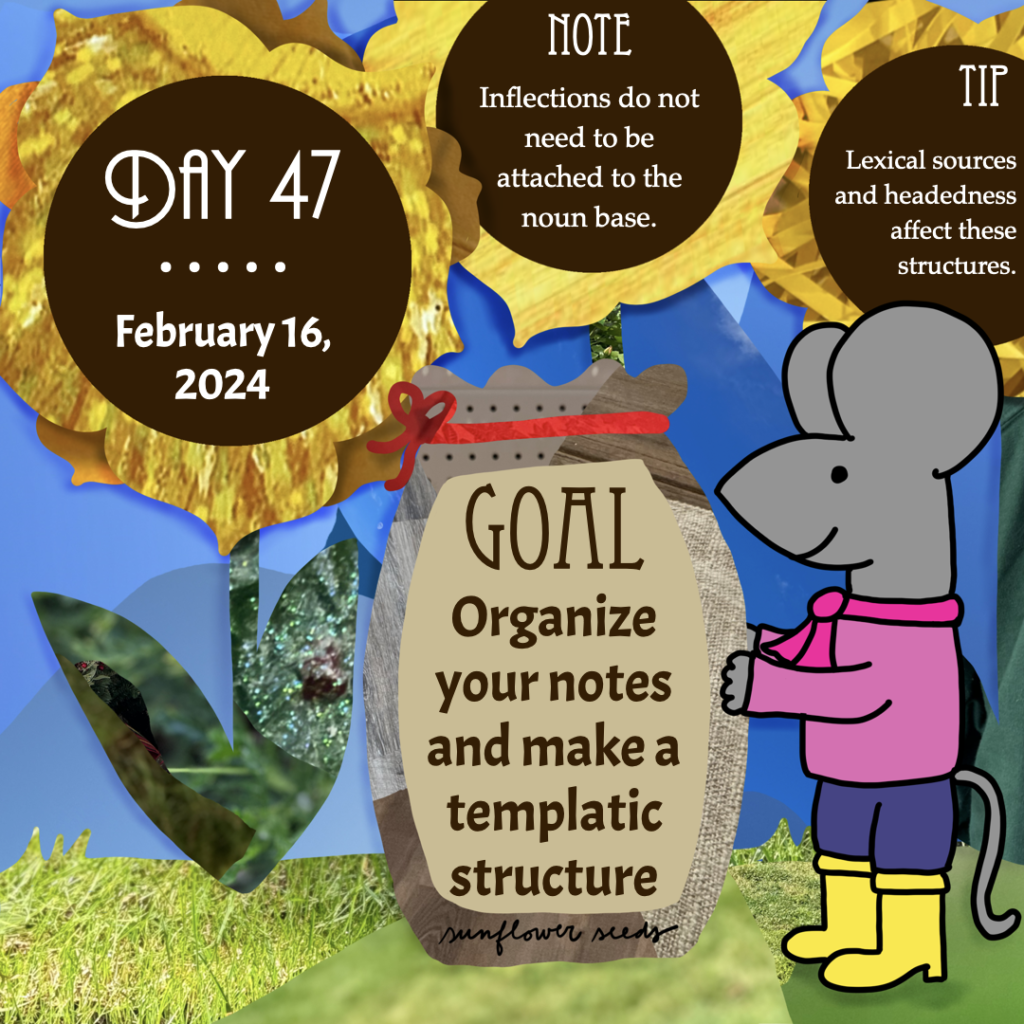
Goal: Organize your notes and make a templatic structure
Note: Use the template to show the basic structure of noun phrases.
Tip: Lexical sources and headedness affect these structures.
Work focus: Organize/Plan/Structure
You’ve now made decisions about whether your nouns will occur with inflections that indicate class, number, definiteness, and/or function. You’ve also decided what lexical sources will serve as origins for the inflections. Now you’re ready to organize all your notes together in one place and decide on ordering for the inflectional markings relative to the noun and relative to each other.
To decide what order the inflectional marking should be relative to the noun, consider what lexical source you selected for it. For instance, if your accusative case marker source is the transitive verb “to take,” where the noun it’s marking is intended to be the object of the taking, then it would make sense to use the same ordering of the object and verb that clauses have. So, if your language is SOV, then the accusative case marker would likely follow the noun, whether it is a suffix or a particle that occurs after the noun.
If you are marking more than one inflection that will occur in the same position relative to the noun (e.g. two of the inflections you’ve selected will be suffixes), then you need to decide the ordering of those inflections when they both occur with the noun. For that, you might consider what inflection would be older for you system—that is, what inflection you think speakers would have developed first. The older inflection will occur closer to the noun than new inflections.
The second half of this prompt asks you to make a templatic structure to indicate all this information. You haven’t yet created the forms themselves, so this is really just a way of showing what nominal inflections you will incorporate into the language and where they will occur. For instance, your template may look something like one of these:
- NOUN-number-case
- NOUN-class definite
- number NOUN
The hyphens indicate whether the inflections are attached. The first template has two suffixes that attach to the noun, the second has one suffix and one inflectional word (i.e. a function word) occurring after the noun, and the third has one inflectional word occurring before the noun.
Beginning tomorrow you will be starting to create forms and reducing them to mimic the grammaticalization process. One thing you need to keep in mind when you begin creating forms is that, for some languages, forms are more likely to fuse or merge to the point where it can be difficult, if not impossible, to separate out, for instance, the number from the case marker or even the number marker from the noun base. For other languages, the information is more agglutinated, or stacked, so that each unit remains a distinct form. If your language is more synthetic, consider whether you want forms that are more fusional or agglutinative.
